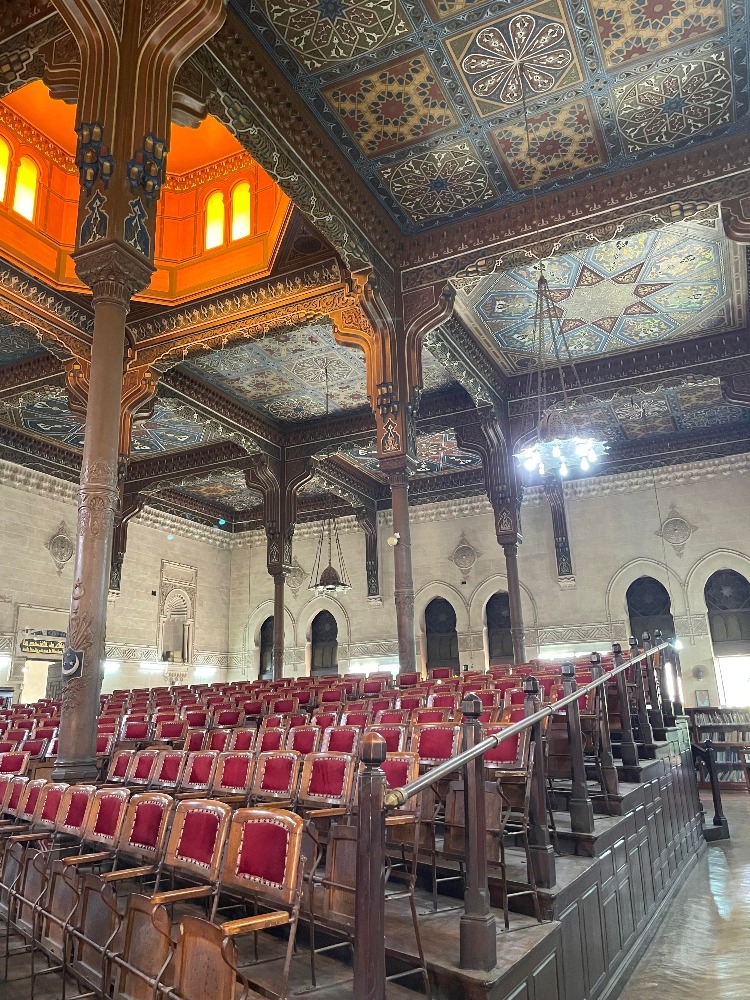A typical visit to any museum is pretty self-explanatory. After a quick Google search for Egypt’s top museums you’ll find the Grand Egyptian Museum appearing at the top. You’ll browse a bit before making your choice. The next day, you’d probably buy a ticket from a booth at the museum’s entrance and then merely go in and start exploring the artefacts behind glass displays or the paintings adorning its walls. Some museums, however, like to do things a little differently.
Meet Egypt’s Geographic Association museum. It’s a hidden gem that the Scoop Team discovered by coincidence while having a friendly chat with one of the team’s Islamic History enthusiasts. It being underrated and sort of unknown piqued our curiosity so we decided to give it a visit.
The Daunting Entrance
Driving to the museum, we realized that the closer we got to the GPS location, the more it became difficult to find a parking spot. With it being near AUC’s Tahrir campus, every road that branched out from or near the museum was heavily guarded by security guards making parking nearly impossible. Luckily, there was one road overlooking the entrance of AUC’s Tahrir campus where a tiny empty spot was found.

From there, we had to walk a bit before reaching the museum’s location. We reached an entrance to what we presumed to be the museum. Behind it were several pale grey buildings within an open courtyard. Standing there, a large gate towered over us as we looked around to see if we can find a plaque with a name or even a hanging sign. Instead, we were met with a tall man in a suit holding a walkie-talkie asking what we are looking for.
After showing him a picture of the museum, we thought he would let us right in. Instead, we were met with a round of questions, “are you planning to visit the museum?” “Why are you visiting it?” “Who are you?” It felt like a full-fledged interrogation session inside one of those dimly lit rooms.
It turns out, that only people with an invitation or students are allowed access to this enigmatic museum. Asking for our IDs, after taking a look, he called someone inside and asked him to make us an invitation. The only reason we were allowed entry is because we’re documented as students on our IDs.
Getting through the gate was merely the first step. What followed was a walk through a metal detector inside a small entry room, name badges getting worn around our necks followed by a walk into the museum itself. At the entrance, we had to fill this large ledger with our names, occupations, and the two numbers on our badges. Following the tedious bureaucratic procedure, we finally entered the first room of the museum.
Entering The Hall Of Hobbies & Traditions
Cutting off from the main hall was the first room. Upon entering it, we were immediately surrounded by rows of glass display cases in the center of the room and outlining its walls. Two women greeted us, one of which was a middle-aged chirpy passionate guide called Miss Ibtesam. From the start, she took us right under her wing and began walking us through every single display case, one by one despite us not requesting a tour guide.
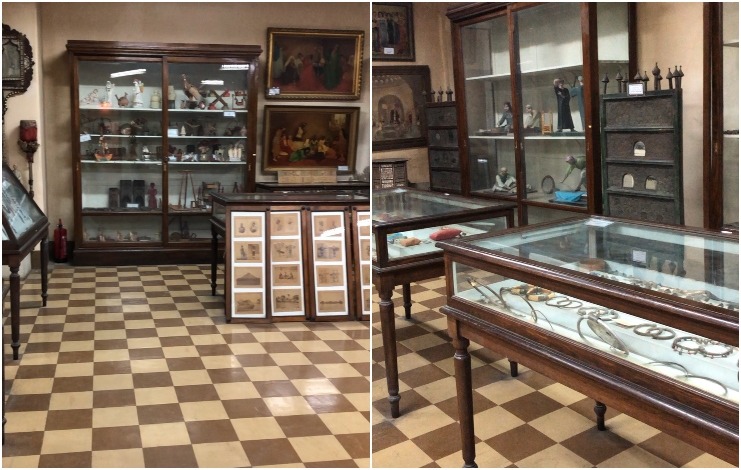
Starting off with its origin story, Ibtesam told us how the museum opened its doors in 1875. Khedive Ismail wanted to have a meeting place for Egypt’s first geographic association, a group of botanists, geographers and travelers who would explore locations in Africa and Egypt. That is why the museum houses maps, geographical books and a whole room devoted to the African continent.
Later on, during the rule of King Fouad, the museum took on a new shape. The King wanted to create a timestamp of what daily life was like in Egypt during the 18th Century. So, he asked the Pashas, Princes, and residents of Egypt to send over any item representative of that time. That is how the Egyptian hobbies and traditions hall came to life.
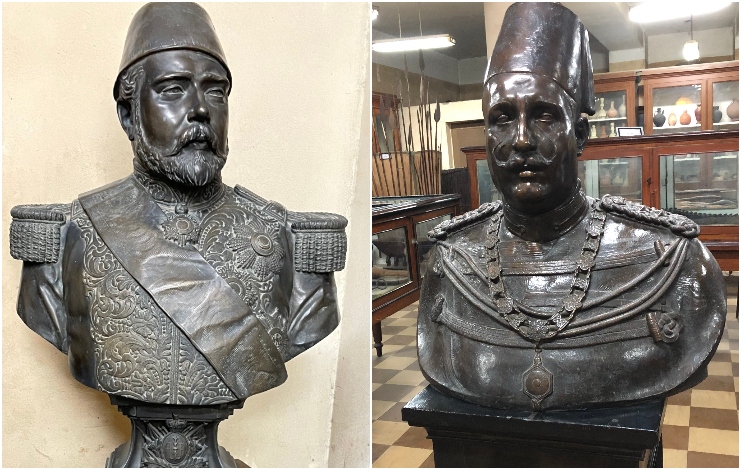
The hall did give us a true look into the daily life of 18th century Egyptians and it was not merely from the elaborate displays filled with everything from toys, jewellery to cooking pots but through Miss Ibtesam’s detailed yet equally comical descriptions of each item and hilarious side comments. She truly left no stone unturned. This hall alone took us an entire forty minutes and there were three more to explore.
Favorite Moments With Miss Ibtesam
Egypt’s rich past and traditions showcased prominently in the museum, Ibtesam pointed at a statue of a man holding a shadoof, a long pole mounted like a seesaw with a bucket hanging from its long end while on the short end there is a weight. It was used to fill a bucket with water from the Nile and transfer it to the grasslands for irrigation, when she saw it, she said “my grandpa used to use it.”
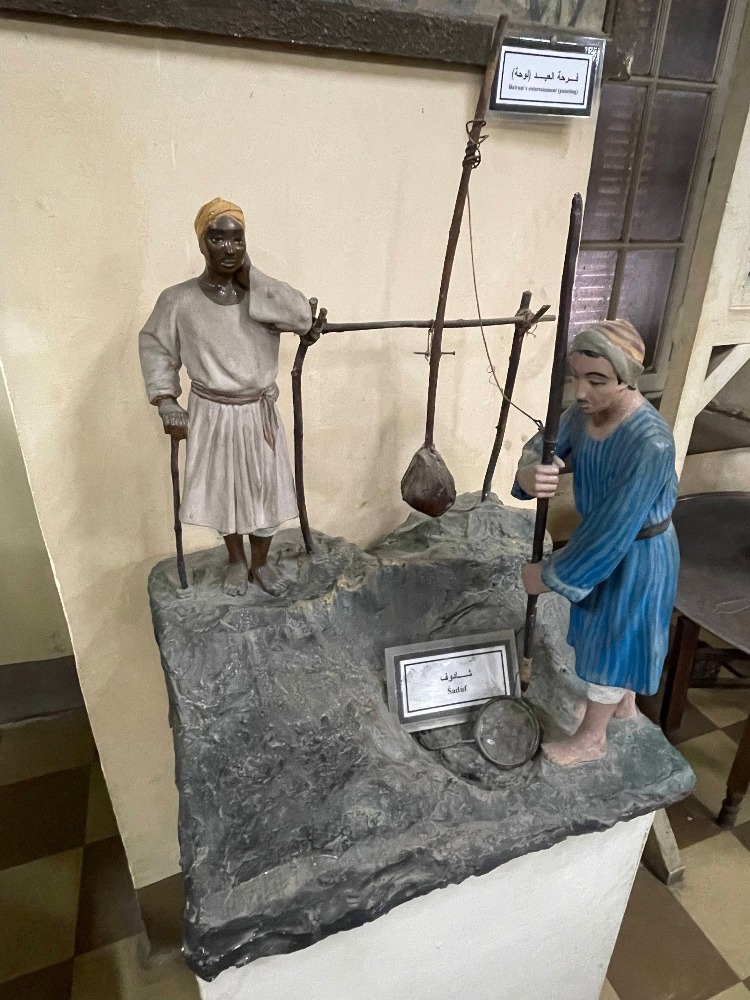
The entire time and to our later amusement, we both thought she was referring to her actual grandparents when in fact, she was actually referring to 18th Century Egyptians. It’s the same concept as referring to people from the past as our ancestors.
Her comments were also quite priceless. While standing by a display case filled with thick silver bracelets, she walked over to the case, raised her eyebrows slightly and whispered “see how broad and wide these bracelets are, that’s because back then women were more on the melazlaza (plump) side unlike the thin examples you’ll see today.” We couldn’t help but giggle as she shook her head in disapproval.
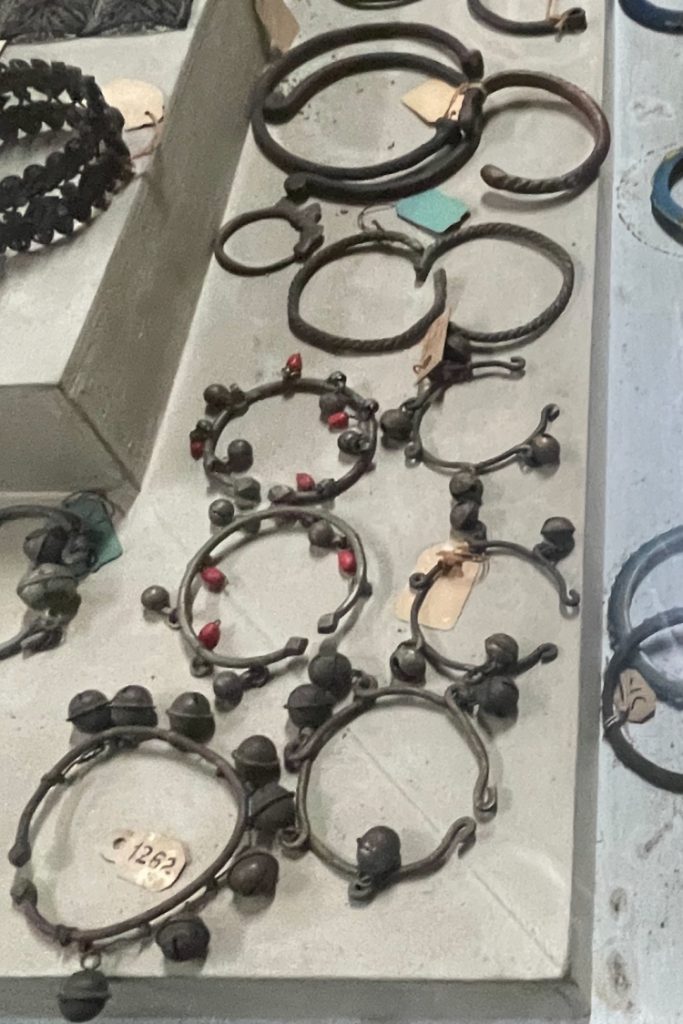
Her speech was pretty quick. Sometimes she would pause to take a quick breath and then resume talking. Halfway through the tour, someone ran over to her with a tiny iced bottle of water. That is why, by the end of the first half, we felt our brain was flooded with information, incapable of taking in any more facts. We had to go through the Suez Canal and Africa halls as well but by then, we were no longer registering any more information.
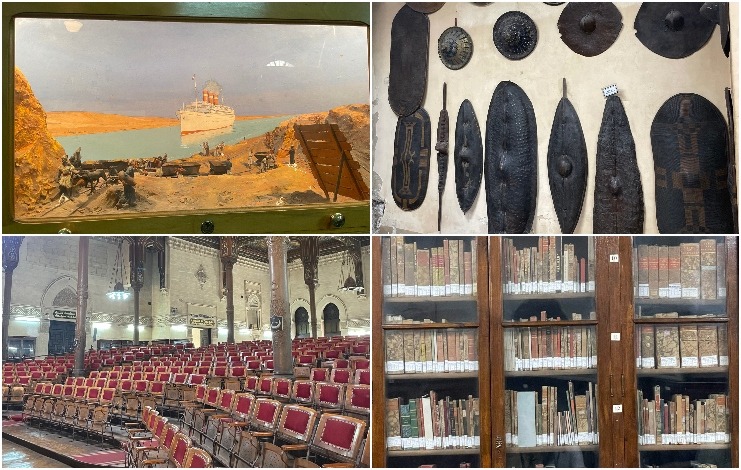
That is why to visit such as museum you will need to be prepared in several ways. To avoid the hassle of being disallowed entry from the start, call the institution and make sure to get an invitation to enter the museum. Then, go online and read a bit about the halls and rooms, you can pick a maximum of one to two rooms to avoid the information overhaul. If you prefer to visit the museum in its entirety, make sure to get a good night’s sleep and head to the museum a bit before 10 am as they close quite early, at 2:30 pm sharp.
Most importantly, we would highly recommend taking the tour with Miss Ibtesam for a richer and hilarious experience.
WE SAID THIS: Don’t Miss…Egypt’s Gayer Anderson Museum: A Window Into Ottoman Daily Life


